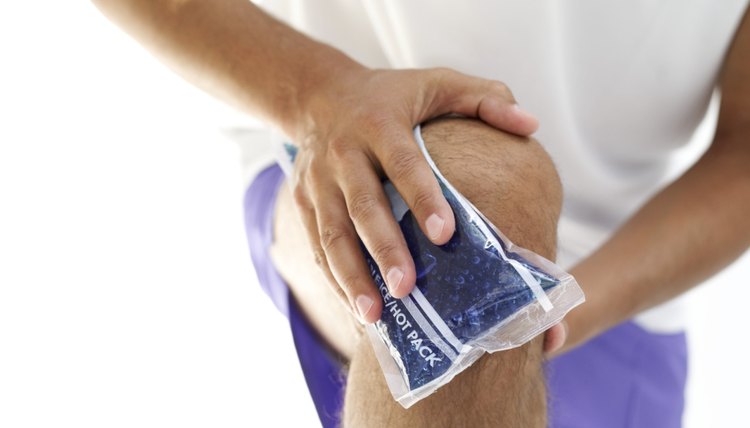How to Know Whether to Work Out With a Pulled Quad

It's a common myth that the road to fitness requires "working through the pain." Pain that begins 24 to 48 hours after exercise, called delayed onset muscle soreness, or DOMS, is normal after exertion and simply requires a one- or two-day rest before working the sore muscle again. However, a sudden pain in the quadricep or front of the thigh -- or any muscle -- usually signals a pull or strain; that is, damage to the muscle fiber and possibly the tendon that attaches the muscle to the bone. Working through that pain can end up sidelining you far longer than it would have taken to simply allow the muscle to heal.
Stop exercising the quads immediately if you experience a sudden, sharp pain. Even though the pain may diminish or disappear, immediately protect the injured area by not engaging in any exercises that might further injure the muscle. This would include not just exercises like leg extensions, squats and leg presses that directly work the quad but also exercises in which the quads assist, like hip flexions or lifting weights.
Pay close attention to the severity of the pain and the appearance of the injured area. Pulls, otherwise known as strains, have three levels of severity. Slight tenderness and mild pain with full range of motion is a first-degree pull. Swelling may occur with a second-degree pull or strain, along with a slight loss of strength in the muscle. While the pain of a third-degree strain -- usually termed a tear -- may not last, you will experience a much more severe or total loss of strength.
Refrain from engaging in any resistance or weight training exercise that engages the quads for 48 to 72 hours after the injury. However, during this time it is recommended that you engage in gentle movement without additional weight, like limited leg extensions while seated.
Begin slowly, after the initial rest period, by engaging in slow, gentle movements with light weight that gradually increases the range of motion. For example, you might do seated leg extensions with light ankle weights -- maybe 5 lbs.
Return to gradually progressive strength and resistance training once you are pain free in the area of the quads. Any pain experienced means you are moving too quickly. This stage usually begins 14 to 21 days after the original injury.
Tips
It could take three months to a year for a pulled muscle to completely heal, depending on the severity.
During the first 48 to 72 hours, practice RICE -- restrict activity, apply ice to the injured area, apply compression and elevate the injured area, in this case, the thigh.
You can, and should, continue aerobic activity throughout the rest and healing period. Avoid anything that causes pain in the injured quad muscle, like the stair climber or step. Exercise in water is particularly good for injured muscles.
Warnings
Consult a physician for third-degree and second-degree strains when they include weakness of the muscle.
If you notice swelling, bruising or other changes in the skin around the injured area, or if you cannot put weight on your leg, seek medical attention.
References
- ASCM.org: ASCM Information On... Sprains, Strains and Tears
- American College of Sports Medicine: Sprains and Strains: What They Area, and What to Do About Them
- Michael Castleman: Men's Fitness, The Suffering Athlete's Guide to Pain Relief
- The University of New Mexico: Treating and Preventing DOMS
- Personal Fitness Training:Theory and Practice, Second Edition; 2010
- MDGuidelines: Sprains and Strains
Writer Bio
Nancy Cross is a certified paralegal who has worked as an employee benefits specialist and counseled employees on retirement preparation, including financial and estate planning. In addition to writing and editing, she runs a small business with her husband and is a certified personal trainer with the Aerobics and Fitness Association of America (AFAA).
